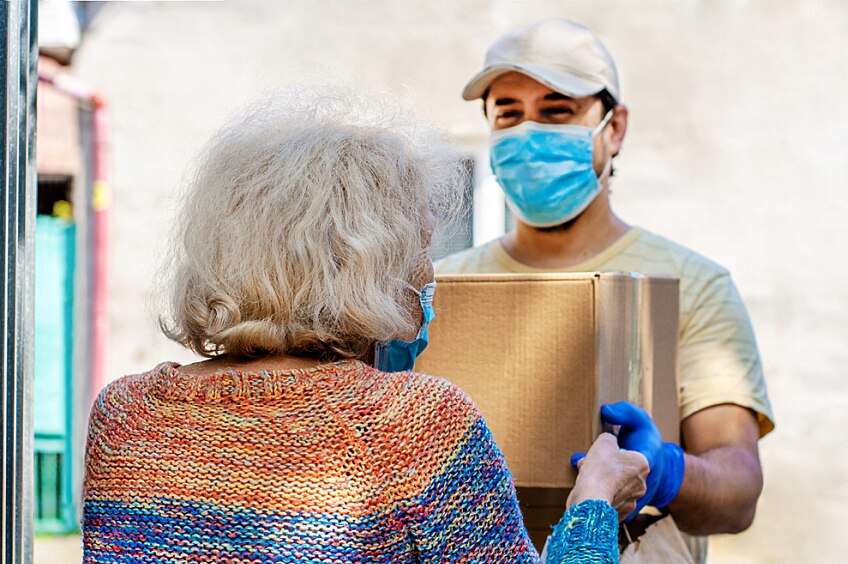Is your community ready for emergencies? National Preparedness Month empowers "American people to prepare for, respond to, and mitigate emergencies, including natural and man-made disasters."
As a roofing contractor, business leader, and member of your community, you're uniquely qualified to take part.
Why It's Worth Getting Involved
This month of action aligns with September's 20th annual 9/11 National Day of Service—a commemoration and celebration of the powerful efforts of community members and first responders after the tragedy on 9/11. As much as the events of 9/11 caught many communities off-guard, Americans came together to assist in recovery and support for those impacted by these tragic events. As we reflect on the 20 year anniversary, consider giving back to your communities by aiding in local preparedness efforts.
Beginning with your own family and extending out to your business and your community, you can become a trusted leader by teaching others about the importance of preparedness.
How to Prepare
Start by readying your community to not only develop a natural disaster response, but to prepare for all types of emergencies. For instance, a crisis may come in the form of widespread health hazards, large-scale accidents or acts of violence, or technology-related hazards like power outages.
Learn which disasters are most likely to occur in your area with this interactive map from the American Red Cross, and gather resources about how to respond to these different kinds of emergencies.
How to Get Involved
Not sure where to start? Many community associations and organizations have opportunities to volunteer and support local residents in need. Similarly, roofing contractors have a unique opportunity to become a valuable community partner through manufacturing or trade organizations. One example of this is a program that is available for contractors certified by GAF* called GAF's Community Contractor Program. Contractors who enroll in this program will receive special training, and will be given tools and guidance on how to support their communities when it comes to disaster resiliency.
While you're considering enrolling in a program like this, take a moment to better understand the different ways you can protect yourself, your family and your local community. In conjunction with National Preparedness Month, each week in September has its own theme to help prepare for the unexpected.
Week 1: Make a Plan
Start at home: Ensure that your family has an "in case of emergency" plan. Then, make a plan for your business as well. Double-check that employees understand it and that they have an emergency home plan, too. Finally, reach out to the larger community using social media, a company newsletter, or neighborhood outreach:
Encourage customers, neighbors, and employees to get an understanding of the emergency alert systems and sign up for county-specific alerts. From California to Florida, each state and county has its own, localized emergency information.
Print free readiness materials from the Federal Emergency Management Agency (FEMA) for shelter, evacuation, and communication plans. On top of posting to social media, distribute these materials at job sites, within professional associations, and to neighbors.
Week 2: Build a Kit
Build a basic disaster kit for your home, vehicles, and business. Ensure that your employees have their own kits for their homes and vehicles. Then, work to empower your community at large:
Create kit-building accountability groups through professional and social networks to encourage members to build their own preparedness kits.
Host a bring-your-own-supplies community kit-building event at your office or company parking lot. Promote on social media with kit supply lists. To provide extra incentives without breaking the bank, consider offering canned goods or raffling off a free roof inspection to attendees.
Week 3: Prepare Homes in Your Community
Roofing contractors know how disaster preparedness can help homes weather a storm. Use your expertise to empower your community:
Contact local news and radio stations. Offer to provide information about homeowner storm safety prep, including cleaning gutters and clearing the yard. Discuss the importance of disaster preparedness, having a plan, and building a kit.
Emphasize the importance of understanding home and roof warranties, as well as documenting belongings before disaster strikes.
Week 4: Teach Youth Preparedness
Kids need to develop disaster resiliency, too. Get your kids involved in making an emergency plan, building a kit, and providing outreach to neighbors. Beyond your home, you can educate your wider community about youth preparedness:
Share tips and graphics from this FEMA social media tool kit, created especially to educate kids on staying prepared.
Talk with your children's schools—and encourage community members to do the same—so all parents know their kids' school's emergency response plans.
Empower your community to face disaster during National Preparedness Month. Not only will you help save lives, but you'll also help to build hope for the future. Contact your local Territory Manager for information on joining GAF's Community Contractor Program.
*Contractors enrolled in GAF certification programs are not employees or agents of GAF, and GAF does not control or otherwise supervise these independent businesses. Contractors may receive benefits, such as loyalty rewards points and discounts on marketing tools from GAF for participating in the program and offering GAF enhanced warranties, which require the use of a minimum amount of GAF products.

